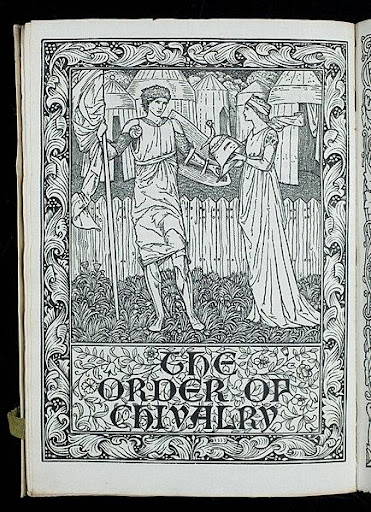Adelaide Magnolia Letter 14 - Pistols at Dawn
Chivalry

No Joke. Etching by Thomas Lord Busby. 1826 London. Courtesy British Museum
Chivalry today is thought to be a term to denote gallantry of men towards women, but originally the word held a different meaning. The word chivalry comes from the French word chevalier, which means horse-soldiery and was used in 11th century Europe to refer to a group of knights serving a king, or in essence the formation of cavalry on the field. The word chevalier was also used to define an aristocratic, noble man who could equip himself with a horse and weapons to enter battle.
Chivalry continued to change in meaning as the Middle Ages progressed. With the end of the Crusades in the 13th century, the popularity of the Knights, or the chevalier, grew. The word chivalry started to become synonymous with the behavior and conduct expected of these elite and noble fighters not only to establish their reputations, but also to quell their behavior. Though sources vary on what specific behaviors were expected, they all agree on the following: bravery in battle, loyalty to God and your country, honesty to thy word, champion against injustice and evil, and the respect of women. However, these rules only applied to interactions in battle or with those in the noble classes. There was little respect given to those who were poor.
With the rise of professional armies in Europe after the Middle Ages, there was a decline in the orders of knights and with this the formal code of chivalry was gone. But the historical ideals of chivalry remained through to the modern eras, and in the 18th and 19th centuries the idea that men should act and behave in honorable, brave, and loyal manners harks back to the pattern established by the Knights of the Middle Ages. Maintaining and defending one’s Honor became a large part of a gentlemen’s behavior in Regency England. So much so, that one became willing to die defending it. This led to dueling, a culture based on a code of honor, much like the code of chivalry.

No Joke. Etching by Thomas Lord Busby. 1826 London. Courtesy British Museum
Dueling
Dueling in the 18th and 19th century became a popular practice among the men of the noble and upper classes who wanted to prove their bravery and exert their masculinity. Masculinity was intertwined with the virtue of one’s honor, which needed to be maintained and defended. A gentlemen’s honor was proved by their behavior towards high-born ladies, as well as in their civil behavior with other honorable men. So, when that honor was threatened, a gentlemen demanded a duel in order to gain satisfaction to restore his honor by being willing to lay down his life for it.
Duels were often fought over trivial matters, such as insults or perceived slights, and were sometimes even initiated by third parties on behalf of the disputants. They were occasionally even fought over a woman, either for retribution for harming her reputation or because the dispute between the men was over a woman’s affection. Despite being illegal, dueling was widely accepted in society, and many prominent figures, including politicians and military officers, participated in the practice.
The rules of dueling were strictly observed, and a number of codes and regulations were established to ensure fairness and safety. For example, duels were usually fought at dawn to minimize the risk of interference, and if using pistols the participants would often take several paces away from each other before turning and firing. Seconds, who acted as witnesses and advisors to the participants, were also present to ensure the rules were followed and to help settle the dispute peacefully if possible.
However, despite the rules and regulations, dueling was a dangerous and often deadly practice. Many people were seriously injured or killed in duels, and the practice was increasingly criticized by those who saw it as barbaric and unnecessary. In 1829, dueling was finally made illegal in Great Britain, although it continued to be practiced in other countries. Today, dueling is largely viewed as a relic of the past, but it continues to fascinate and intrigue people as a symbol of a bygone era of chivalry and honor.
Learn the Vernacular:
Reticule: a woman’s drawstring hand bag or purse
Blacksmith’s Cottage: blacksmiths in Gretna Green would perform marriages in their cottages
Fisticuffs: an impromptu fist fight
Sixpence: a coin equal to six pennies or half a shilling
Over the anvil: to seal the marriage, the blacksmith would bring down his hammer on the anvil
Christian name: one’s first given name; first names were very rarely used and it was seen as
improper or too familiar to use if not given permission to do so
Sources:
https://www.history.com/news/chivalry-knights-middle-ages
https://en.wikipedia.org/wiki/Knight
https://www.britannica.com/topic/chivalry
https://en.wikipedia.org/wiki/Chivalry
https://janeaustensworld.com/tag/regency-code-of-honor/
https://janeausten.co.uk/blogs/regency-history/to-punish-or-defend-the-regency-duel
https://en.wikipedia.org/wiki/Duel
